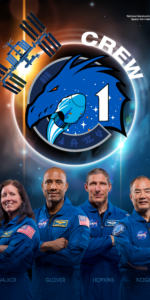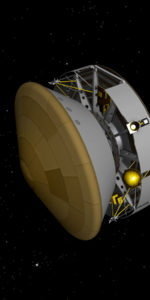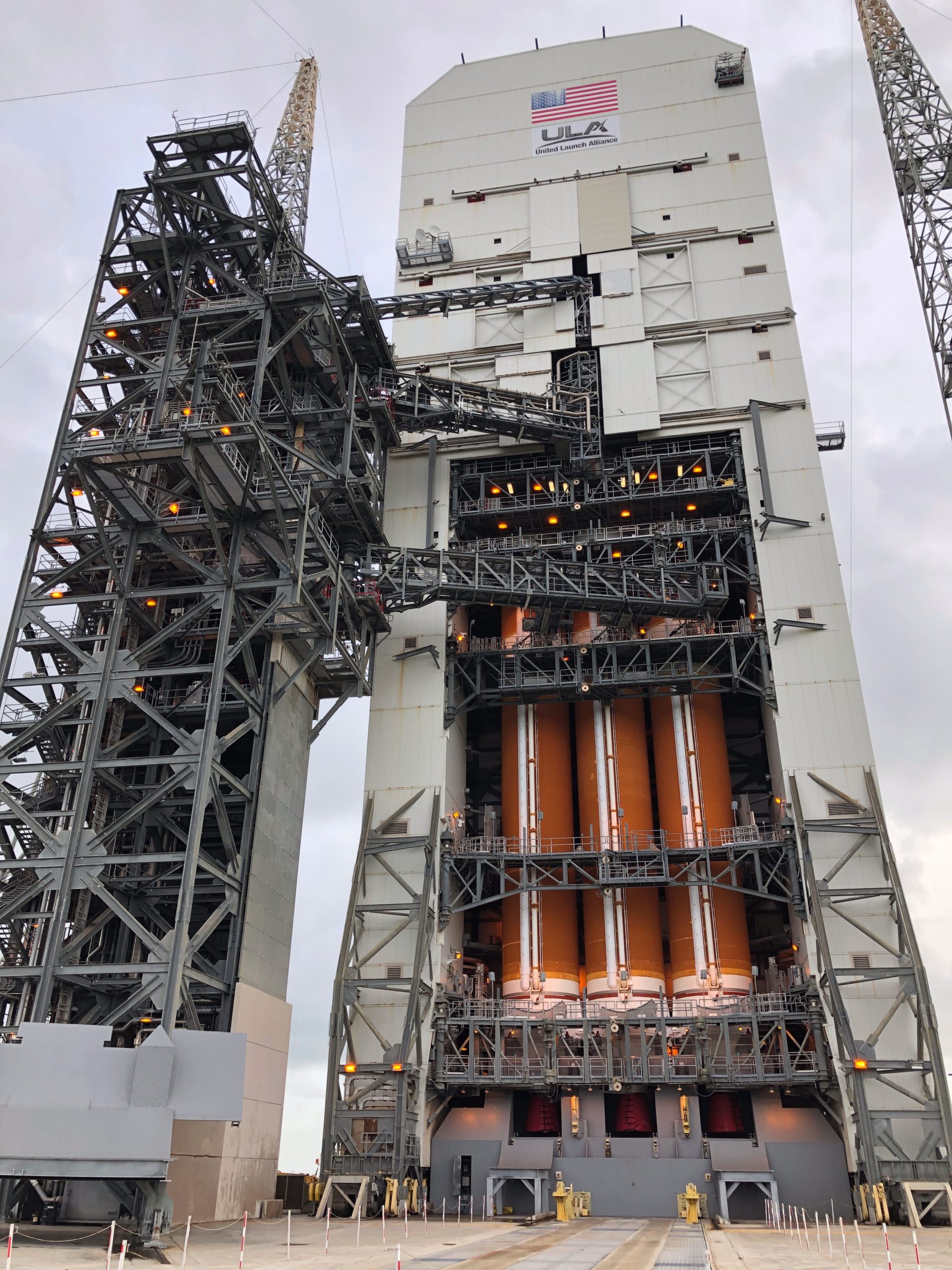
UPDATE – NROL-44 launch has slipped a day, “due to customer request. Launch is now scheduled for 2:12 a.m. EDT, on Aug. 27, 2020” – ULA
Weather permitting, the rocket’s red glare will revisit the Space Coast three times this week, as a triple-barreled Delta IV Heavy—the first of its kind to fly in more than a year and a half—rises from Space Launch Complex (SLC)-37B at Cape Canaveral Air Force Station early Thursday morning for United Launch Alliance (ULA) and a previously-flown SpaceX Falcon 9 follows from neighboring SLC-40 late Thursday night, to be bookended by yet another from historic Pad 39A at the Kennedy Space Center (KSC) as early as Saturday morning. But aside from creating lots of smoke and a great deal of noise, the three missions could not be more dissimilar if they tried.
FOLLOW AmericaSpace’s LIVE NROL-44 Launch Coverage HERE!
The Falcon 9’s Thursday mission carries a radar-imaging Earth-observation satellite for Argentina on SpaceX’s 100th rocket launch, whilst its Saturday morning flight will be laden with 60 Starlink low-orbiting internet communications satellites. Meanwhile, the infrequently-flown Delta IV Heavy is tasked with a highly secretive mission on behalf of the National Reconnaissance Office.
The weather outlook, notwithstanding the gradual west-northwestward progress of Tropical Storm Laura over the weekend, looks decidedly positive, with a 70-percent probability of good conditions for Thursday and a slight upward trend to 80-percent-favorable in the event of a 24-hour scrub to Friday.
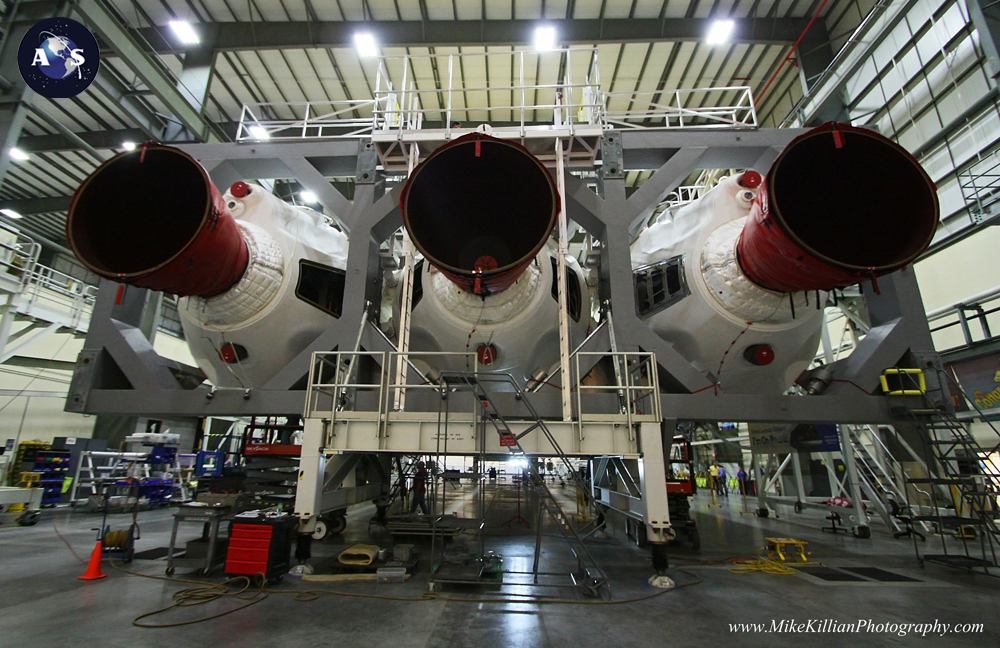
“Tropical Storm Laura will continue to move toward the west-northwest, near Cuba, and emerge into the central Gulf of Mexico tomorrow, remaining well away from the Space Coast,” noted the 45th Weather Squadron at Patrick Air Force Base in its L-2 briefing on Monday. “Still, the system will tighten the local pressure gradient today, bringing breezy southeast winds as well as a chance of fast, onshore-moving showers and perhaps a thunderstorm.”
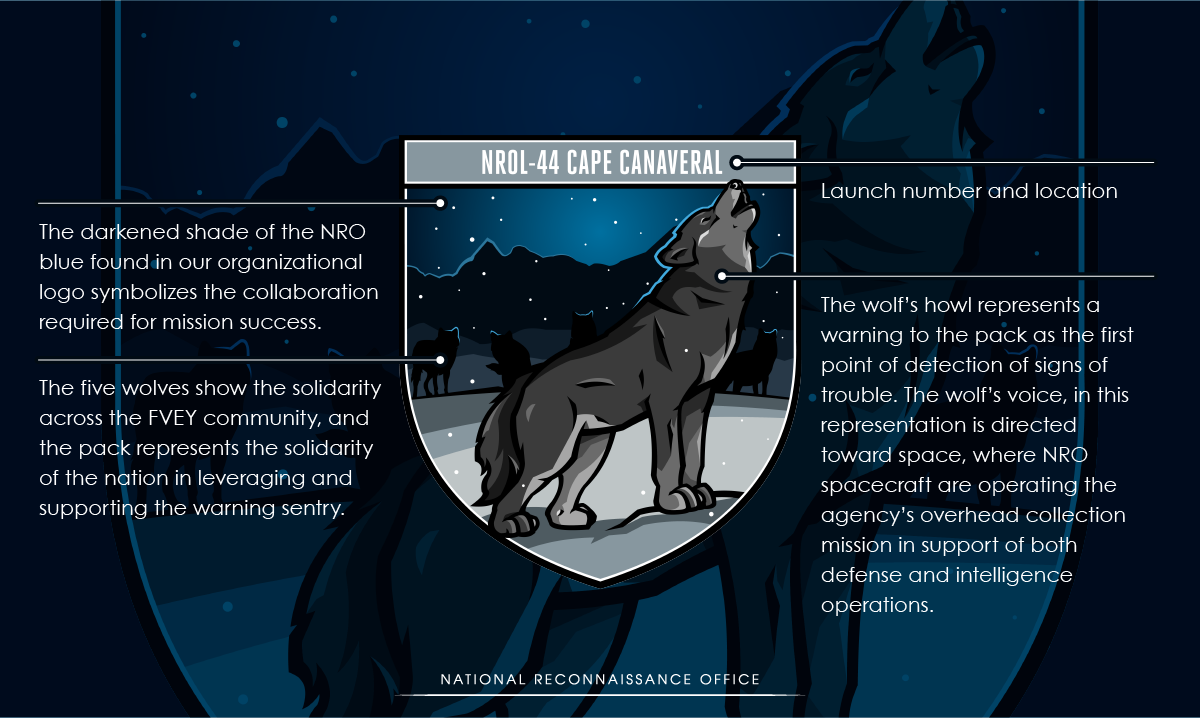
The Delta IV Heavy hardware for this mission—which includes a trio of Common Booster Cores (CBCs), each powered by an RS-68A engine, together with the Delta Cryogenic Second Stage (DCSS), powered by a single RL10-B-2 engine—has been on SLC-37B since 15 November of last year.
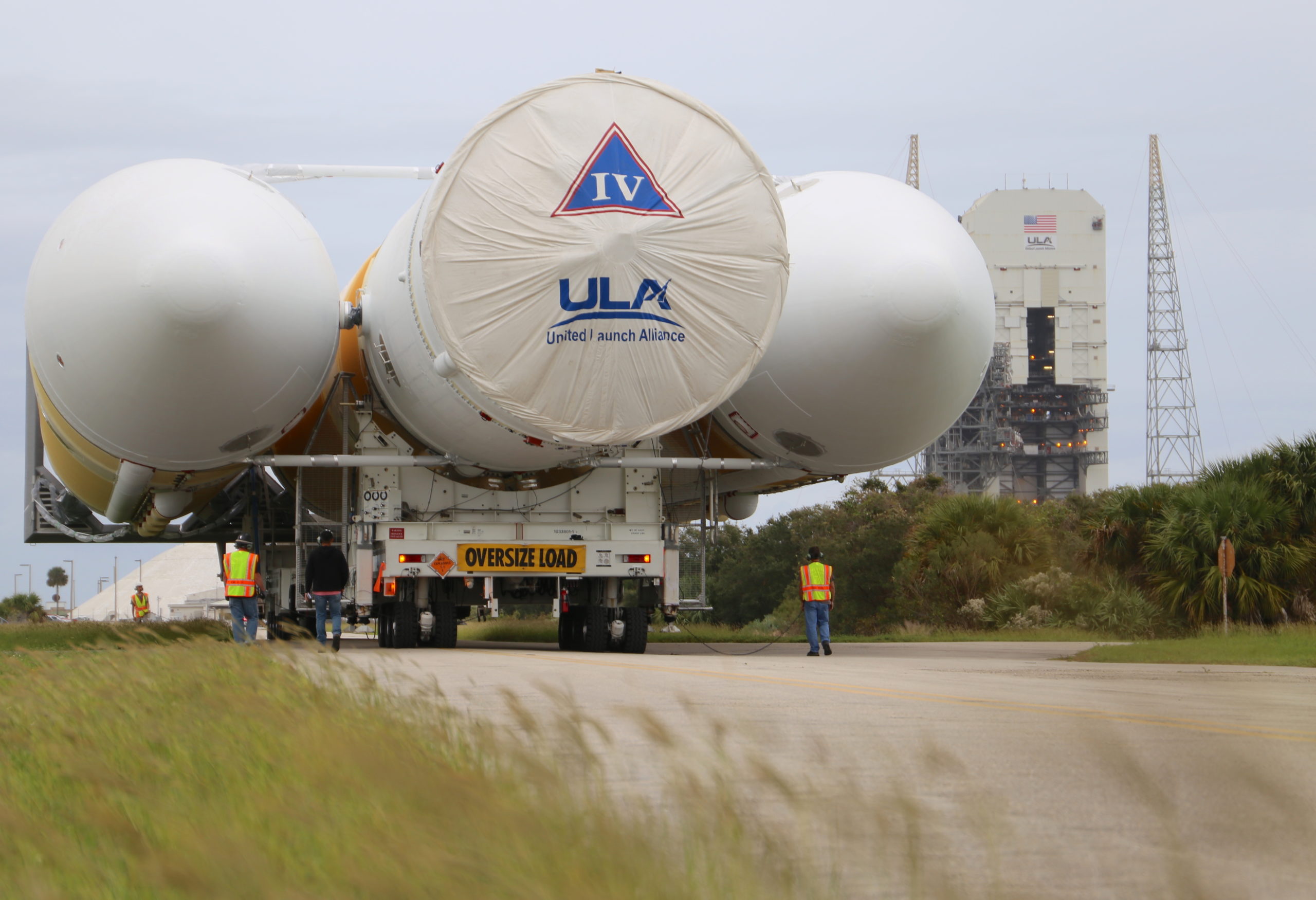
Minus its payload fairing, the stack underwent a Wet Dress Rehearsal (WDR) on 10 January, during which the intricate day-of-launch activities were rehearsed, including the rollback of the 300-foot-tall (100-meter) Mobile Service Tower (MST) and fueling of the booster with 440,000 pounds (200,000 kg) of liquid oxygen and hydrogen. The countdown proceeded through the “terminal count” at T-4 minutes and the clock was halted as planned at T-10 seconds. The giant rocket was subsequently safed and its cryogenic tanks were drained.
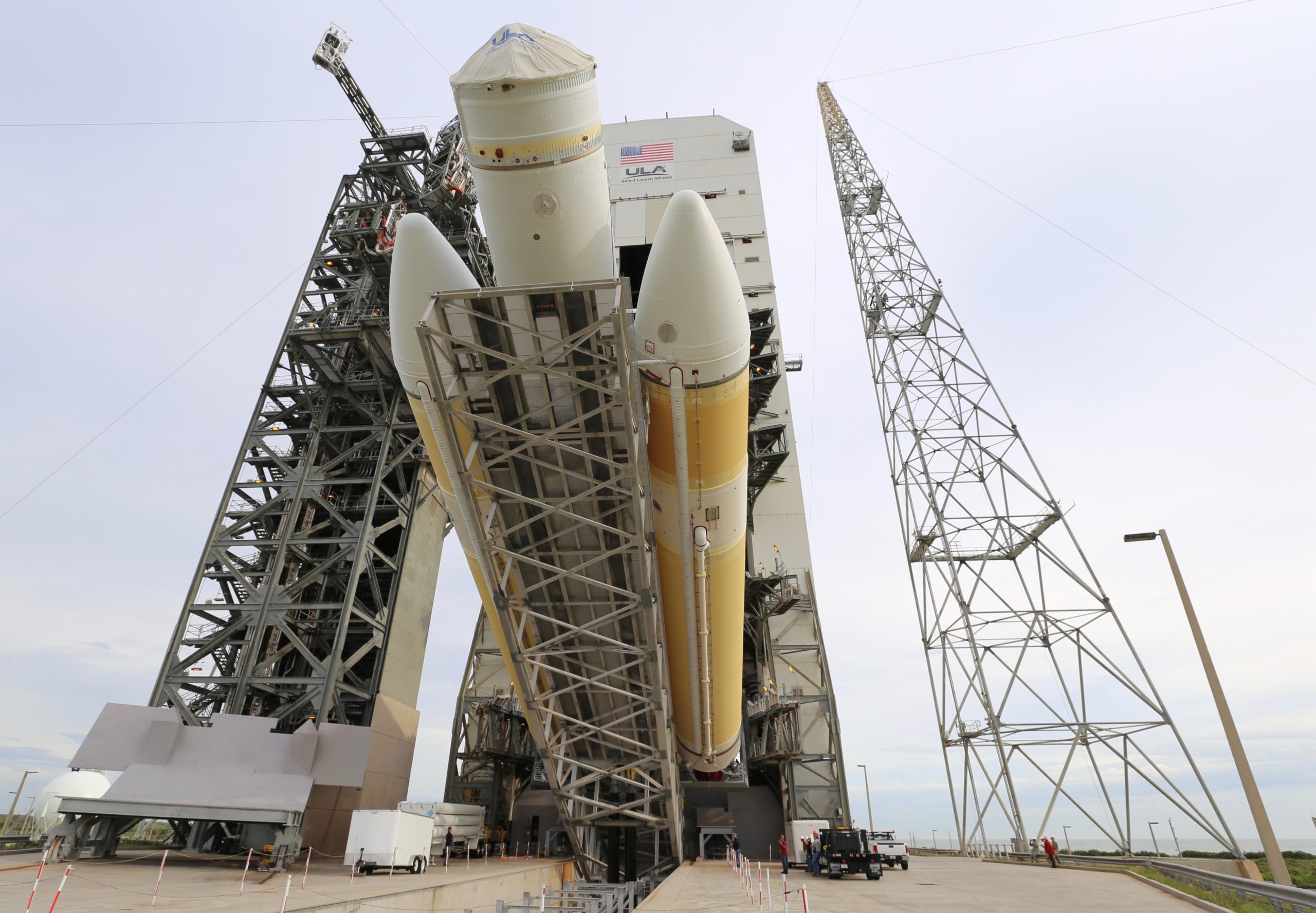
Original plans called for the mission to fly in June, although it was postponed until late August, for reasons which remain unclear. Equally unusual has been the length of time that the Delta IV Heavy has sat on the pad: even a June launch would have produced a record-setting seven-month flow for this mission. If it launches in the early hours of Wednesday morning, it will have resided on SLC-37B for no less than 285 days. Responding to recent Twitter questions about this lengthy pad flow, ULA CEO Tory Bruno noted cryptically “Reasons” and added that “Special things happening with this one”.
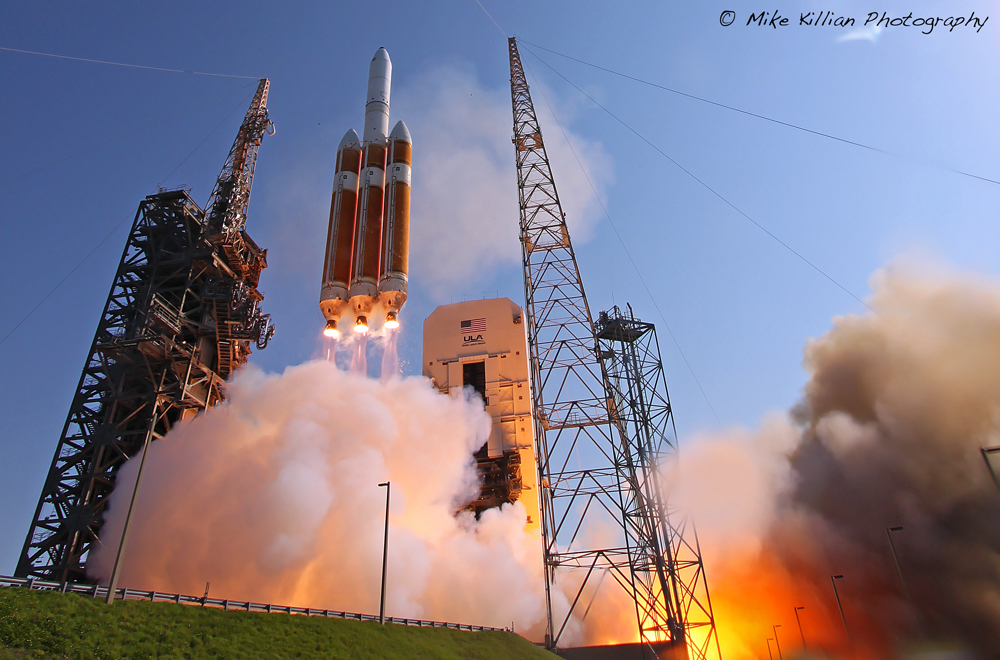
Judging from the Delta IV Heavy’s performance envelope—up to 63,470 pounds (28,790 kg) to low-Earth orbit and as much as 31,350 pounds (14,220 kg) to geostationary transfer orbit—it is clear that NROL-44 is a heavyweight payload with a high-energy launch requirement.
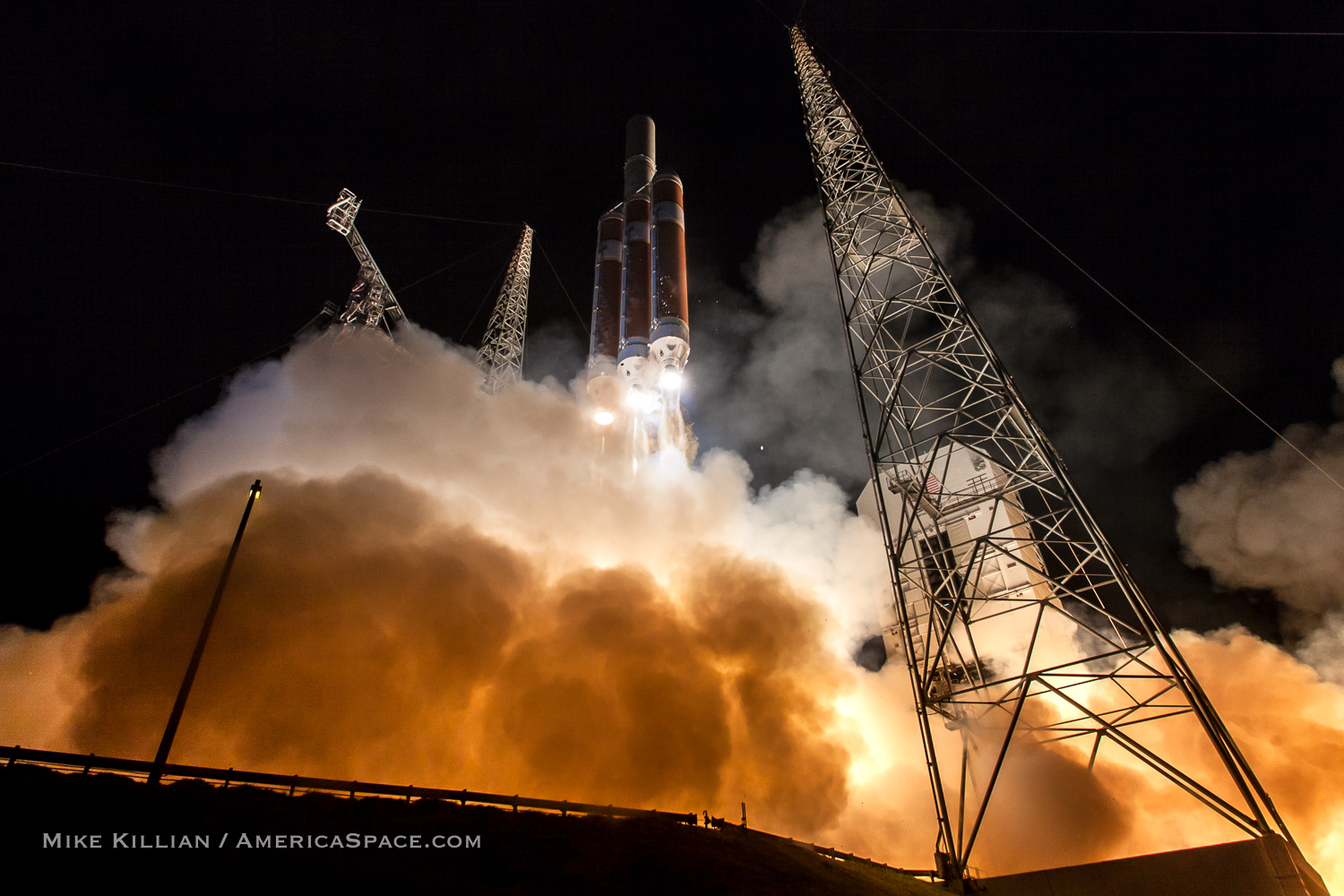
It has been suggested that it may be an Advanced Orion (alternatively codenamed “Mentor”) signals-intelligence satellite, weighing as much as 11,500 pounds (5,200 kg) and bound for geostationary altitude, some 22,600 miles (35,900 km) above the planet. This would certainly be in keeping with suspicions about earlier Delta IV Heavy launches for the NRO, with four previous payloads including the 2016-launched NROL-37 also rumored to be of the Advanced Orion/Mentor type.
“The Northrop Grumman satellite has a Harris mesh antenna spanning about 330 feet (100 meters),” AmericaSpace explained in its NROL-37 launch report. “The overall spacecraft was substantially upgraded starting in 2009 with the NROL-26 flight carrying the first Advanced Orion/Mentor.” Other missions are thought to have included NROL-32 in November 2010, NROL-49 in January 2011, NROL-15 in June 2012 and NROL-37 in June 2016. The lifting capability of the Delta IV Heavy’s RS-68A engines is also believed to afford the satellites added “maneuvering, life-extending and eavesdropping intelligence capabilities”.
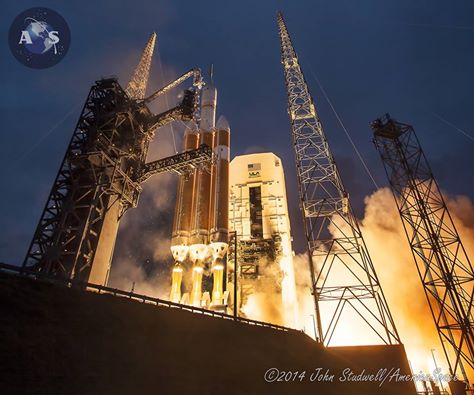
As recently outlined by AmericaSpace’s Mike Killian, the highly secretive NROL-44 payload (whatever it is) was transported to SLC-37B in late July. Encapsulated within its 65-foot-long (19.8-meter) Payload Fairing (PLF), it was mounted atop the Delta IV Heavy, topping-out the rocket at an impressive 235 feet (72 meters). On Monday morning, the Launch Readiness Review (LRR), led by ULA Launch Director Lou Mangieri, was completed at the Delta Operations Center (DOC) at the Cape and virtually, via teleconferencing.
The LRR involved representatives from ULA, the National Reconnaissance Office and the U.S. Space Force to assess the readiness of the rocket and mission assets, as well as the current status of vehicle processing and the weather outlook. At the end of the review, senior leaders were polled and gave a unanimous “Ready” status for launch, before signing the Launch Readiness Certificate.
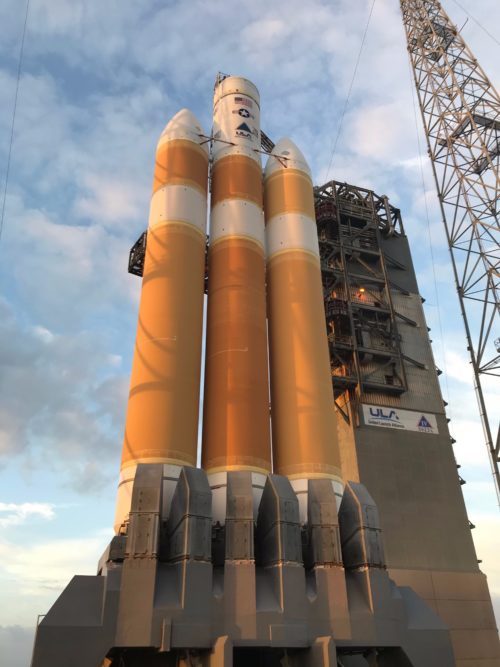
And the weather looks set to remain favorable for the roughly 45-minute-long process of rolling back the MST from the Delta IV Heavy on Tuesday. “Tomorrow, high pressure centered off the Carolinas will build toward the area, allowing winds to relax in the afternoon while also decreasing precipitation chances in time for MST Roll in the evening,” the 45th Weather Squadron noted in its Monday update. “With continued onshore flow and adequate moisture, a few showers over the Atlantic are expected to push toward the coast both Tuesday and Wednesday nights.”
This is expected to create a 70-percent likelihood of acceptable weather in the small hours of Wednesday morning, improving to 80 percent in the event of a scrub. The only possible violating factor is an infringement of the Cumulus Cloud Rule for both nights.
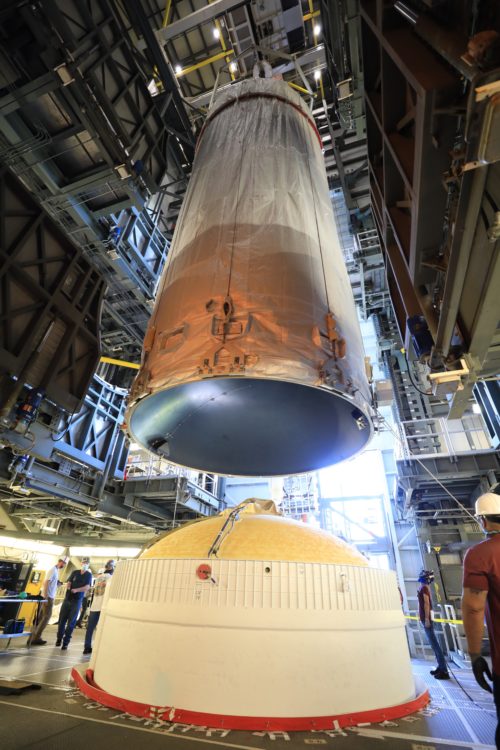
As previously highlighted in AmericaSpace’s Launch Tracker, the launch “window” on Thursday extends from 1:50 a.m. through 6:25 a.m. EDT, although T-0 and liftoff is precisely targeted for 2:12 a.m. When the Delta IV Heavy rises from Earth, it will do so with a combined thrust of 2.1 million pounds (1.1 million kg) from its three RS-68A engines.
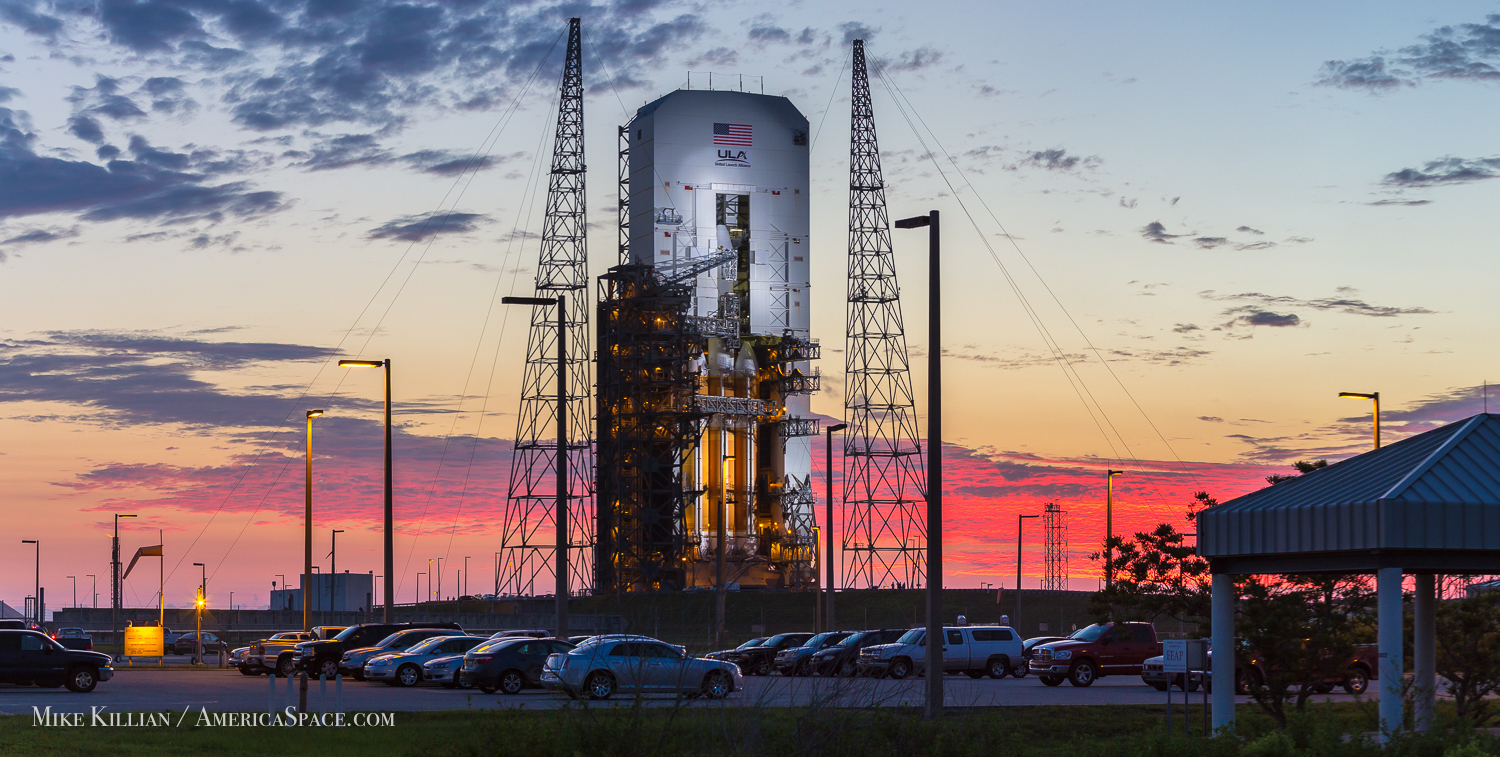
To conserve propellant, the center CBC will throttle back early in the ascent, whilst the two strap-on CBCs fire at full-bore for the first four minutes of the mission. When the boosters are discarded, the center CBC will ramp up to full power for another 90 seconds, until it, too, burns out at about 5.5 minutes after launch. It will then be up to the DCSS to deliver the classified NROL-44 payload onward to orbit, with the jettison of the PLF scheduled to occur at 6.5 minutes into the mission.
Snapping at the heels of the Delta IV Heavy from neighboring Space Launch Complex (SLC)-40 at Cape Canaveral Air Force Station and historic Pad 39A at the Kennedy Space Center (KSC) are no fewer than two previously-flown Falcon 9s, which may set a new empirical record for the shortest interval between two missions by SpaceX’s venerable fleet of boosters.
Assuming an on-time launch in the small hours of Wednesday morning for NROL-44, the veteran B1059 Falcon 9 core—embarking on its fourth flight, having previously lofted the most recent pair of Dragon cargo missions to the International Space Station (ISS) in December 2019 and March 2020, followed by a batch of Starlink low-orbiting internet communications satellites on 13 June—is set to liftoff from SLC-40 no sooner than 7:19 p.m. EDT on Thursday, 27 August.
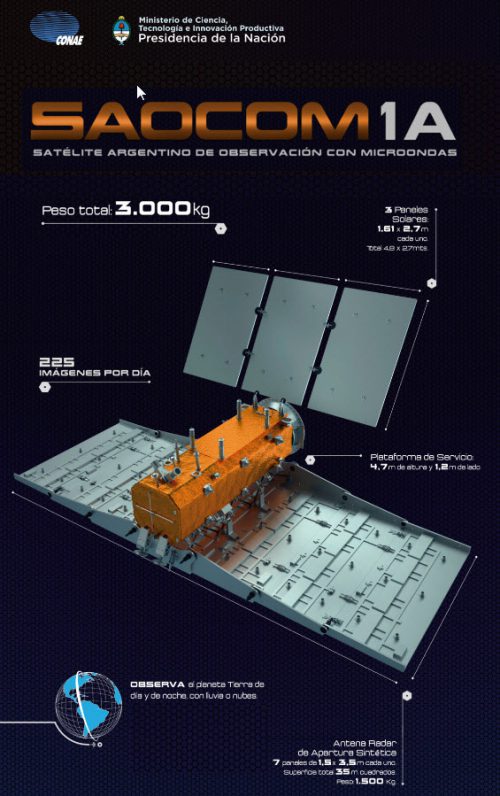
As previously described by AmericaSpace, this flight carries Argentina’s long-delayed SAOCOM-1B satellite, which will join its twin, the 2018-launched SAOCOM-1A, in conducting L-band radar-imaging of Earth. Working together in near-polar orbit, the two satellites will contribute to a broad range of applications, including relief from natural disasters, soil-moisture mapping, terrain-modeling and volcanology.
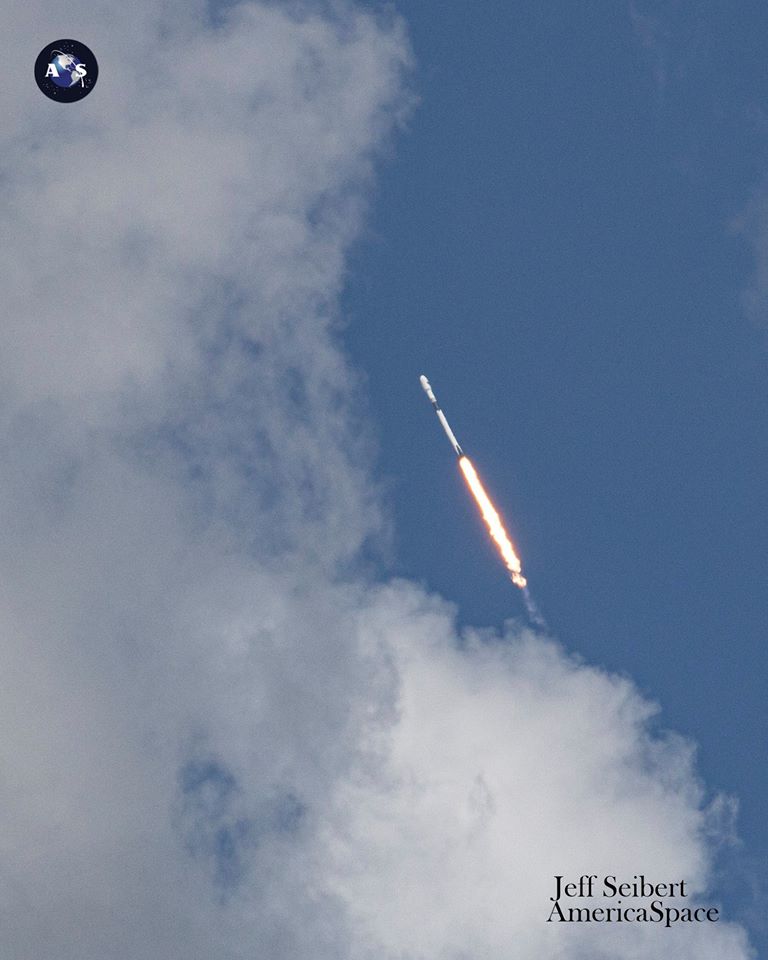
Thirty-nine hours after the dust settles from the SAOCOM-1B launch, the seasoned B1060 core—which last saw service to loft the third Global Positioning System (GPS) Block III navigation and timing satellite for the U.S. Space Force on 30 June—is set to roar from Pad 39A to deliver a 60-strong batch of Starlink internet communications satellites into low-Earth orbit.
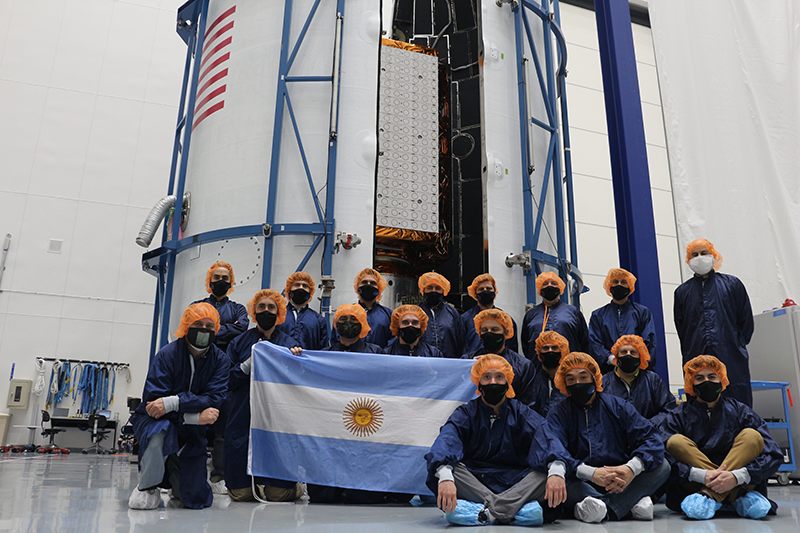
Should both fly on time, this will establish a new record for SpaceX between any two of its launches. Two previous pairs of missions, in June 2017 and December 2018, came close, with roughly 48 hours between each flight, although in both cases the launches occurred from the East and West Coasts of the United States. This week’s double-header of Falcon 9s (to say nothing of the mammoth Falcon Heavy) will all originate from the Space Coast.
.
.
FOLLOW AmericaSpace on Facebook and Twitter!
.
.
Missions » NROL »



